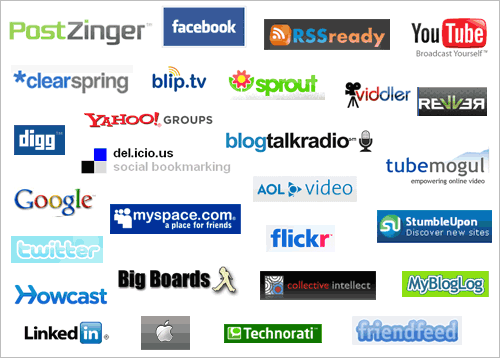As Apple Inc. started selling the iPhone 4 in China through partner China Unicom Ltd, while it is enjoying tremendous sales growth, it is apparently facing several issues. There is growing competition from rival smartphones that made by local vendors such as Lenovo Group Ltd. and Huawei Technologies Co. The intense competition is consider a threat for iPhone because its sales number is below expectation. One of the points of difference for iPhone is that it is expensive price compared to that of other devices in Chinese market. One of it points of parity is that iPhone shares similar features and performance many smartphones offer. Another threat iPhone encountered before its release in China was that Apple did not own an “iPhone” trademark in China that covers mobile phones. There was necessity for iPhone to make a deal with China’s Hanwang Technology owned the trademark for “i-phone” in the country. In conclusion, for a business to come into a new market, it has to grasp its opportunities – in this case the massive Chinese market, to improve its product to stay competitive in the market and think of strategies to tackle the threats.
Don’t be Tricked by McDonald’s Ads
 In Mcdonald’s ad, we will always see a clown with orange hair, the signature mascot of Mcdonald’s, play with kids making them happy. The advertising constantly portrays Mcdonald’s as a happy and circus-like place. Mcdonald’s tries to convey a message that, if you come to Mcdonald’s, you will be as happy and exiting as those kids. Because of these ubiquitous advertising, it does help the company trap younger kids into thinking why won’t they go there if they can have so much fun there. The real purpose of the company is trying to trick kids into thinking of Mcdonald’s and the fun time every time they see a clown with orange hair. McDonald’s knows exactly what kind of pressure this puts on parents. It’s hard for parents not to give in the way of keeping children happy. It is just not ethical because McDonald’s is taking advantage of the younger kids to help it generate more profits. It exploits the fact that the younger children are the group that is less likely to resist the temptation to have fun with cartoon characters while eating. It utilizes the trick trying to bring in more customers, the children along with their parents who are the ones to pay.
In Mcdonald’s ad, we will always see a clown with orange hair, the signature mascot of Mcdonald’s, play with kids making them happy. The advertising constantly portrays Mcdonald’s as a happy and circus-like place. Mcdonald’s tries to convey a message that, if you come to Mcdonald’s, you will be as happy and exiting as those kids. Because of these ubiquitous advertising, it does help the company trap younger kids into thinking why won’t they go there if they can have so much fun there. The real purpose of the company is trying to trick kids into thinking of Mcdonald’s and the fun time every time they see a clown with orange hair. McDonald’s knows exactly what kind of pressure this puts on parents. It’s hard for parents not to give in the way of keeping children happy. It is just not ethical because McDonald’s is taking advantage of the younger kids to help it generate more profits. It exploits the fact that the younger children are the group that is less likely to resist the temptation to have fun with cartoon characters while eating. It utilizes the trick trying to bring in more customers, the children along with their parents who are the ones to pay.
Customer Behaviours
 After reading an interesting article, I came to understand that people’s preferences are different when the results of their decisions will be realized in the near future versus in the distant future. It reminds me of what we learned about consumers’ behaviours in class. Consumer behaviours are affected by cultural factors, social factors and personal factors. I find that personal factors play a very important role in determining customer’s behaviours. The article has me realize that why candies are always placed near the checkout counter of supermarkets whereas vegetables and others are placed further away. When customers are near the checkout, they have to decide quickly whether or not to make the purchase and thus customers are expected to make choices favouring their affective desires since there is limited time to think. However, when there is more time to think, customers may find healthy food more attractive because they know healthy products are going to benefit them in the long run. Isn’t it an intelligent way of doing business? Since market demand and supply are determined by customers, it is important for retailers to understand the factors that influence customer’s behaviours and their expectations. In conclusion, being able to think from the perspectives of customers knowing what they “ actually need” and what they “want” , and adjust its marketing strategy to satisfy customers’ interests are likely to help the business optimize its profit.
After reading an interesting article, I came to understand that people’s preferences are different when the results of their decisions will be realized in the near future versus in the distant future. It reminds me of what we learned about consumers’ behaviours in class. Consumer behaviours are affected by cultural factors, social factors and personal factors. I find that personal factors play a very important role in determining customer’s behaviours. The article has me realize that why candies are always placed near the checkout counter of supermarkets whereas vegetables and others are placed further away. When customers are near the checkout, they have to decide quickly whether or not to make the purchase and thus customers are expected to make choices favouring their affective desires since there is limited time to think. However, when there is more time to think, customers may find healthy food more attractive because they know healthy products are going to benefit them in the long run. Isn’t it an intelligent way of doing business? Since market demand and supply are determined by customers, it is important for retailers to understand the factors that influence customer’s behaviours and their expectations. In conclusion, being able to think from the perspectives of customers knowing what they “ actually need” and what they “want” , and adjust its marketing strategy to satisfy customers’ interests are likely to help the business optimize its profit.
Corporate Social Responsibility
We have learned in the class that corporate social responsibility includes economic growth, social and environmental limits. I think environmental concern is the most important aspect with respect to sustainability. Being sustainable requires a business to go green, using environmentally friendly in production process. One interesting fact I found when I was reading an article is that many entrepreneurs now are focused not on solar and the other usual suspects of green building, but on the mundane stuff or existing materials. For example, some innovators take wood from old barns and other buildings and reuse into flooring and paneling. Some others are taking the wool from sheep that is used to be discarded and using it as building insulation to replace fibreglass. There are innovative ways that allow entrepreneurs to make use of typical stuff that we see in daily life. In such a market that encourages green movement, entrepreneurs should engage in a profusion of new materials or new uses for old materials in order to exploit the full potential of limited resources to perform its corporate social responsibility.
What Happen to Pepsi’s Plastic Dumping?
 Do you know how Pepsi handle with their used plastic bottles? Many customers might be aware that Pepsi’s has all its plastic waste exported to India every year and according to the reporters, piles and piles of used soda bottles from Pepsi were stacked in abandoned factories in Southern India.
Do you know how Pepsi handle with their used plastic bottles? Many customers might be aware that Pepsi’s has all its plastic waste exported to India every year and according to the reporters, piles and piles of used soda bottles from Pepsi were stacked in abandoned factories in Southern India.
Why did Pepsi export all the waste to India? Firstly, it will save the company much money since it is cheaper to handle the waste in India than to recycle it in the United States or transport it to U.S landfill sites. Secondly, Pepsi understands that if the plastic is not well processed, it will lead to environmental damages. Therefore, having all the waste exported to India helps the company escape from dealing directly with these problems. What Pepsis needs to do is to pay India to process the waste for the company.
It is just unfair for the developing countries. Since they already have enough problems dealing with their own plastic wastes, why should they import other people’s garbage? As a beverage giant, Pepsi’s behaviours are considered unethical because it makes India bear the burden of environmental and health impacts from plastic waste, while consumers worldwide will be able to continue purchasing products from Pepsi and disposing its plastic bottles. In other words, India is suffering from the consequences, while Pepsi is enjoying its growing profit and its reputation of being “environmentally friendly” by promising that the bottles are being properly recycled but actually it isn’t. At worst, Pepsi encourages consumers to buy more since their environmental concerns are lessened by the promise that the bottles are being recycled but it turns out that most of the plastic bottles that are exported to India cannot be processed and then be discarded there. The environment problems are hided from the customers but the truth will be eventually disclosed. In conclusion, having green or environmentally friendly products is necessary for a business’s long term survival in the competitive market where customers are getting more concerned with the environment.
Relying Social Media Marketing Is Not Enough
Many businesses have relied heavily on online social media such as  Twitter,Facebook or blogs as their marketing strategy. However, I think the best strategy is to incorporate a mix of traditional marketing approaches and online marking. There are reasons why they should consider other social media marketing. First of all, I don’t think that everyone use social media. I even doubt if everyone would go onto Twitter or Facebook every day. People don’t typically schedule when they’re going to be on Twitter/Facebook or when they’ll check their Facebook page. However, people listen to the radio during drive time, and lots of people read newspaper or magazines and watch TV at the specific times each day. When people need to get their messages in front of their potential buyers at least more than five times before consumers can act on the marketing, traditional marketing helps make sure that happens. Furthermore, there are still plenty of people who do not have internet access or just use it as a simple tool to check emails. Thus, the business is likely to alienate a lot of potential customers if they assume everyone will be online and on the same networks as the business is.
Twitter,Facebook or blogs as their marketing strategy. However, I think the best strategy is to incorporate a mix of traditional marketing approaches and online marking. There are reasons why they should consider other social media marketing. First of all, I don’t think that everyone use social media. I even doubt if everyone would go onto Twitter or Facebook every day. People don’t typically schedule when they’re going to be on Twitter/Facebook or when they’ll check their Facebook page. However, people listen to the radio during drive time, and lots of people read newspaper or magazines and watch TV at the specific times each day. When people need to get their messages in front of their potential buyers at least more than five times before consumers can act on the marketing, traditional marketing helps make sure that happens. Furthermore, there are still plenty of people who do not have internet access or just use it as a simple tool to check emails. Thus, the business is likely to alienate a lot of potential customers if they assume everyone will be online and on the same networks as the business is.
Hello world!
Welcome to UBC Blogs. This is your first post. Edit or delete it, then start blogging!
